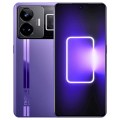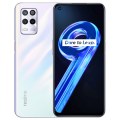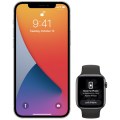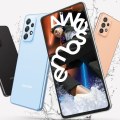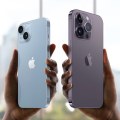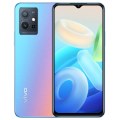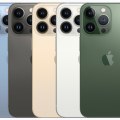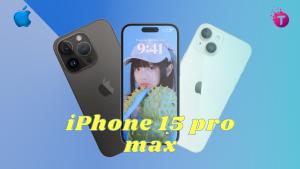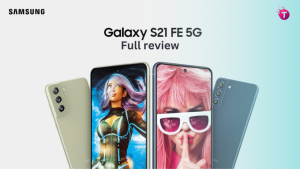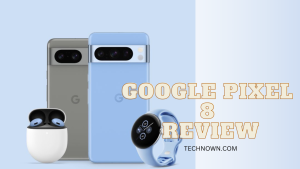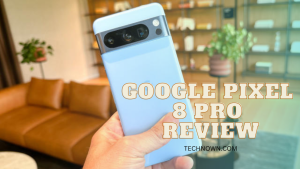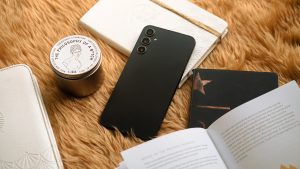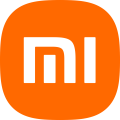Realme Watch 3
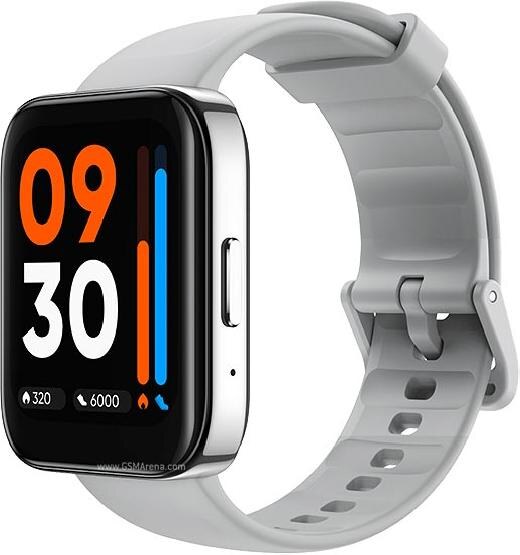


-
CPU:
-
RAM:
-
Storage:
-
Display: AMOLED capacitive touchscreen, 16M colors
-
Camera: No
-
OS: Proprietary OS
Introduction:
In the world of smartwatches, Realme has emerged as a strong contender. Offering feature-packed devices at affordable prices. The Watch is one such addition to their lineup, combining style. Functionality, and fitness tracking capabilities. With its sleek design and a range of impressive features. The Realme Watch 3 aims to be your trusted companion for a healthier lifestyle. Let’s delve into the details and explore what this smartwatch has to offer.
Design and Display:
Its features a modern. And stylish design with a rectangular touchscreen display. The watch sports a vibrant 1.4-inch AMOLED display. That provides crisp visuals and excellent color reproduction. The touchscreen is responsive and intuitive. Allowing easy navigation through the watch’s various features and functions.
Fitness Tracking and Health Monitoring. One of the standout features of the Realme Watch 3. is its comprehensive fitness tracking capabilities. Equipped with an array of sensors. It can accurately track your daily activities. Including steps taken, distance covered, and calories burned. The watch also offers many sports modes. Allowing you to watch specific workouts such as running, cycling, or yoga.
For health-conscious individuals. The Realme Watch 3 includes a heart rate check. That continuously tracks your heart rate throughout the day. It also provides real-time alerts if it detects abnormal heart rate patterns. Additionally, the watch features a blood oxygen level check (SpO2). Enabling you to keep track of your oxygen saturation levels.
Smart Features and Connectivity:
The Realme Watch 3 isn’t just about fitness tracking. It also comes packed with smart features to enhance your daily life. It can receive notifications from your smartphone. Including calls, messages, and app alerts, directly on your wrist. You can even control your music player and camera remotely. Adding convenience to your daily activities.
The watch also offers weather updates, alarm functions, and a find-my-phone feature. Making it a versatile companion for your day-to-day tasks. Moreover, with its Bluetooth connectivity, you can sync the Realme Watch 3 with. Your smartphone and access extra features through the Realme Link app.
Battery Life and Water Resistance: Battery life is a crucial aspect of any smartwatch. And Realme Watch 3 doesn’t disappoint in this department. With its efficient power management system, the watch boasts. An impressive battery life that can last for several days on a single charge, depending on usage. This ensures that you can rely. On it for continuous tracking without frequent recharging.
Furthermore, the Realme Watch 3 comes with an IP68 rating for water and dust resistance. Making it suitable for daily wear and use even during workouts or outdoor activities. You can confidently wear it while swimming or under the rain. As it is designed to withstand water immersion up to a certain depth.
Conclusion:
The Realme Watch 3 offers an attractive package for those seeking a smart. And stylish companion for their fitness journey. With its sleek design, vibrant display, comprehensive fitness tracking features. And smart functionalities, it is a compelling option in the affordable smartwatch segment. Whether you’re an active individual or simply looking to improve. Your overall well-being, the Realme Watch 3 has the potential. To be a reliable and stylish companion on your wrist.
Specs
General
| Device Type | Watch |
| Model | Realme Watch 3 |
| Announced | 26 July, 2024 |
| Released | 02 August, 2024 |
| Status | Available |
| Price | 5000 |
Design
| Type <strong>Design Type</strong> called form factor refers to a mobile phone's size, shape, and style as well as the layout and position of major components of phone. There are three major form factors seen in mobile phones => bar phones, folding phones and sliding phones. | Bar |
| Dimensions | 45 x 37 x 11.5 mm (1.77 x 1.46 x 0.45 in) |
| Weight | 40 g (1.41 oz) |
| Protection |
Glass front, plastic back, plastic frame |
Network
| SIM <strong>SIM</strong> (Subscriber Identity Module) is a small card that contains mobile network subscriber's account information. This allows the phone using the card to attach to a mobile network. The SIM card is most commonly associated with GSM and UMTS mobile networks. Moving a SIM card from one phone to another allows a subscriber to switch mobile phones without having to contact their mobile network carrier. SIM cards can also be used by a phone to store limited amounts of data, such as phone numbers and text messages. | Standard SIM |
| Dual SIM | No |
Display
| Display Type <strong>Display Technology => </strong> A number of display technologies and types used in mobile phones => TFT (Thin Film Transistor), IPS (In-Place Switching), OLED (Organic Light Emitting Diode), AMOLED (Active-Matrix Organic Light-Emitting Diode), Super AMOLED (an even advanced version of AMOLED), Resistive Touchscreen (Resistive touchscreens contain two layer of conductive material with a very small gap between them which acts as a resistance), Capacitive Touchsceen (Capacitive touchscreen technology consists of a layer of glass coated with a transparent conductor) | AMOLED capacitive touchscreen, 16M colors |
| Size | 1.8 inches |
| Resolution | 240 x 286 pixels |
| Pixel Density <strong>Pixel Density (PPI)</strong> is refers to the concentration of pixels on a particular display, measured in pixels per inch (ppi). Pixel density is calculated by dividing the diagonal pixel resolution of a display by its diagonal size, higher pixel density better display quality. | 207 ppi density |
| Features |
500 nits (peak) |
Media
| Audio Playback | No |
| Ring Tones | No alert |
| Loudspeaker | No |
Software
| Operating System <strong>OS => </strong> Every computer system run on a base software called Operating System (OS). Operating System controls all basic operations of the computer (such as smartphone, PDAs, tablet computers and other handheld devices). The Operating System allows the user to install and run third party applications (apps), apps are used to add new functionality to the device. | Proprietary OS |
| Facebook <strong>Facebook</strong> is a popular free social networking website that allows registered users to create profiles, upload photos and video, send messages and keep in touch with friends, family and colleagues. The site is available in 37 different languages. | |
| Youtube <strong>Youtube</strong> is a popular free video-sharing website, Youtube is the largest video sharing site in the world, Millions of users around the world have created accounts on the site that allow them to upload videos that anyone can watch. |
Hardware
| RAM (Memory) <strong>RAM</strong> (Random Access Memory) is a type of computer memory that can be accessed randomly, any byte of memory can be accessed without touching the preceding bytes that allows information to be stored and accessed quickly from random locations. RAM is the most common type of memory found in computer systems, smartphones, tablets and other electronic devices. | 512 MB |
| Card Slot <strong>Memory Card Slot</strong> is a special slot for inserting a memory card. Memory cards allow you to expand the phone's built-in memory, A memory card (sometimes called a flash memory card or a storage card) is a small storage medium used to store data such as text, pictures, audio, and video, for use on small, portable or remote computing devices such as mobile phones, mp3 players, digital cameras. | No |
| Sensors <strong>Sensors</strong> are electronic components that detects and responds to some type of input from the physical environment. The specific input could be light, heat, motion, moisture, pressure and location, The output is generally a signal that is converted to use in computing systems, a location sensor, such as a GPS receiver is able to detect current location of your electronic device. |
Accelerometer, Heart Rate, SpO2 |
Connectivity
| Bluetooth <strong>Bluetooth</strong> is a wireless communications technology for exchanging data between mobile phones, headsets, computers and other network devices over short distances without wires, Bluetooth technology was primarily designed to support simple wireless networking of personal consumer devices. | 5.3, A2DP, LE |
| Infrared <strong>Infrared</strong> connectivity is an old wireless technology used to connect two electronic devices. It uses a beam of infrared light to transmit information and so requires direct line of sight and operates only at close range. | |
| Wi-fi <strong>Wi-Fi</strong> is a popular wireless networking technology using radio waves to provide high-speed network connections that allows devices to communicate without cords or cables, Wi-Fi is increasingly becoming the preferred mode of internet connectivity all over the world. | No |
| Wi-fi Hotspot | |
| USB | No |
| GPS <strong>GPS</strong> The Global Positioning System is a satellite-based radio navigation system, GPS permits users to determine their position, velocity and the time 24 hours a day, in all weather, anywhere in the world, In order to locate your position, your device or GPS receiver must have a clear view of the sky. | No |
| NFC <strong>NFC</strong> (Near field communication) is a set of standards for smartphones and similar devices to establish peer-to-peer radio communications with each other by touching them together or bringing them into proximity, usually no more than a few inches. | |
| HDMI <strong>HDMI</strong> (High-Definition Multimedia Interface) is a compact audio/video interface for transferring uncompressed video data and compressed or uncompressed digital audio data from a HDMI-compliant source device to a compatible computer monitor, video projector, digital television, or digital audio device. | |
| Wireless Charging <strong>Wireless Charging</strong> (Inductive Charging) uses an electromagnetic field to transfer energy between two objects. This is usually done with a charging station. Energy is sent through an inductive coupling to an electrical device, which can then use that energy to charge batteries or run the device. | Yes |
Data
| GPRS <strong>GPRS</strong> (General Packet Radio Service) is a packet oriented mobile data service on the 2G and 3G cellular communication system's global system for mobile communications (GSM), Generally, GPRS is used for the purpose of wireless data transfer, such as sharing pictures and videos or browsing the Internet via a mobile phone connection. | |
| EDGE <strong>EDGE</strong> (Enhanced Data GSM Environment) is a wireless network technology generally considered the next step in the 2G network offers data transfer rates up to four times faster than ordinary GSM networks, Generally, EDGE is used for the purpose of wireless data transfer, such as sharing pictures and videos or browsing the Internet via a mobile phone connection. | |
| Speed | No |
Messaging
| SMS <strong>SMS</strong> (Short Messaging Service) is a text messaging service component of phone, Web, or mobile communication systems. It uses standardized communications protocols to allow mobile phone devices to exchange short text messages over the networks. | Yes |
| MMS <strong>MMS</strong> (Multimedia Messaging Service) is a standard way to send messages that include multimedia content (audio clips, video clips and images) to and from mobile phones over wireless networks using the WAP protocol. |
Battery
| Battery Type <strong>Battery Type => </strong> Cell phones run on various kinds of batteries depending on the manufacturer, phone size or shape and features. There are basically four types of cell phone batteries => Lithium Polymer, Lithium Ion, Nickel Metal Hydride and Nickel Cadmium. | Li-Ion (Lithium Ion) |
| Capacity <strong>Battery Capacity</strong> is a measure (typically in Amp-hr) of the charge stored by the battery, and is determined by the mass of active material contained in the battery. The battery capacity represents the maximum amount of energy that can be extracted from the battery under certain conditions. | 340 mAh |
| Placement | Wireless charging |


